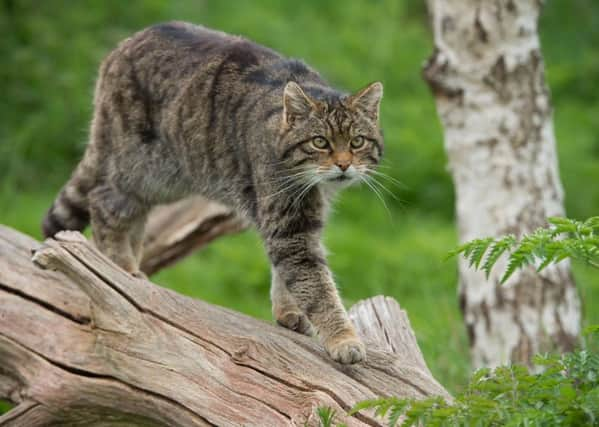Fears over impact on rare Scottish wildcats from tree felling


Activists say they have found evidence of 13 different species living in Clashindarroch, near Huntly, which is owned by Scottish Government agency Forestry Commission Scotland.
Conservation group Wildcat Haven says the “commercial exploitation” of the forest is threatening its entire wildcat population, which is said to be among the most important in the world because some of the species are so rare.
Advertisement
Hide AdAdvertisement
Hide AdActivists claim the work is causing considerable disturbance to the wildcats which can cause females to abandon or even eat their kittens.
However, Forestry Commission Scotland insists its management of Clashindarroch has been scrutinised by independent wildlife experts and meets “international standards of best practice.”
The campaign group has raised concerts about the impact of felling in Clashindarroch just weeks after releasing footage it claims shows that one of the world’s biggest wildcats is living in the forest.
Wildcat Haven campaigner Kev Bell said: “This is the last viable population of Scottish wildcats left anywhere, and Forestry Commission Scotland, whilst publicly claiming to be protecting them, are actively chopping down their home around them. It’s a national scandal – we’re at risk of losing our iconic wildcat to these thoughtless actions.”
Another activist, Steve Sleigh, said: “Clashindarroch must be protected from further commercial exploitation immediately and without compromise, it’s too important. This place needs to be left alone.”
A spokesman for Forestry Commission Scotland said: “All our felling and replanting plans and operations are independently certified to international standards of best practice and ensure a balanced structure is maintained.
“The management of commercial forests creates a very good environment for wildcats with more edge habitats that they use to move around, and clear fell and restock sites that are rich with voles and ideal for foraging.
“We welcome Wildcat Haven’s continued interest in our forest management and for giving us the opportunity to promote and explain the integrated and vital work being done through Scottish Wildcat Action to save Scotland’s wildcats.”